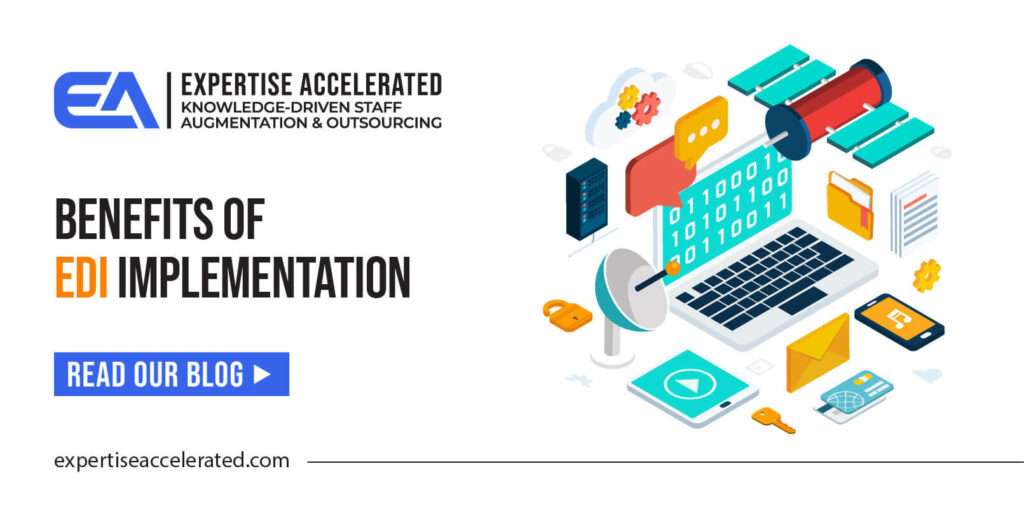Benefits of EDI Implementation
In this blog post, we delve into the myriad benefits offered by the implementation of Electronic Data Interchange (EDI).
Within the realm of client management, there are varying degrees of manual and automated processes followed by companies as follows:
1. Completely manual
Enter order information manually
2. Partially automated
Receive EDIs but don’t integrate them
3. Software integration
Uses software to transfer data from EDI to ERP, with validation checks
The best type of companies are the third ones who have software written, which takes information from the EDI platform and enters that into the ERP system, going through certain validation checks.
The back and forth integration with the EDI platform also significantly helps in timely invoicing. As soon as the invoices are generated, they are just transmitted out using the EDI platform. Plus, most clients have 3PLs, so the information of shipments from 3PLs is also transmitted using the EDI. They may also be transmitted out using flat CSV files, into the client system. This makes the invoicing much more timely.
The biggest benefit of this integration is that the client’s inventory quantities are almost up to date with the physical inventory that is out there. This is helpful if the orders are coming in instantaneously and have been transmitted out again using EDI to the 3PLs. Here, the shipment information is coming instantaneously.
Companies can pretty much run the availability reports from their own ERP systems rather than collecting information from all the different 3PL locations and trying to marry that to the orders on hand to come up with the availability report.
This is also very powerful for the production and operations departments. They are able to see what available inventory they have at any point in time.
The implementation of this integration between the EDI portal and the ERP systems is highly recommended. “It saves on time, improves accuracy, gives very vital data to the operations team at the end of every day, and is all around a win for the client, saves cost as well” said Haroon Jafree, CEO of Expertise Accelerated.
What is the Cost of EDI Integration?
The cost of this integration is not very much. To write this integration software, it can be anywhere between $3,000 to $8,000, but the saving, the return on investment is literally a couple of months at the most.
In this video Haroon Jafree, CEO of Expertise Accelerated, discusses the benefits of integrating EDI with ERP systems, highlighting its comprehensive advantages for CPG companies, the associated expenses, and the timeline for realizing ROI from this integration.
Expertise Accelerated: Driving Excellence in EDI Implementation Services
Expertise Accelerated specializes in delivering best practice implementation services to US consumer packaged goods (CPG) companies and manufacturing firms. Our expertise extends to facilitating seamless integration of processes and systems tailored to the unique needs of each client.
Additionally, we boast a robust team of offshore skilled resources, strategically allocated to support our clients’ projects and initiatives. This combination of industry knowledge and offshore talent enables us to consistently deliver high-quality solutions and drive sustainable growth for our clients.
Conclusion
In conclusion, the implementation of Electronic Data Interchange (EDI) offers significant benefits to businesses, particularly in streamlining operations, improving inventory management, and enhancing overall efficiency.
Despite initial integration costs, the rapid return on investment makes EDI implementation a highly recommended strategy for businesses seeking to optimize processes, save costs, and improve competitiveness in the market.


